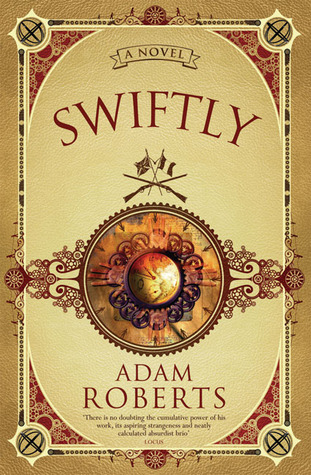
Johnathan Swift’s Gulliver’s Travels is arguably very much of its time and transcendent of time. Its technology and form are undeniably dated, but its basic plot points (a lone voyager travelling to distant lands an experiencing a new culture) are ageless. Although this is a mode that existed long before Swift and has/will continue long after, the elements of Swift’s plot leave many questions unanswered and there is always room for expansion. This is exactly what Adam Roberts makes efforts to do in his novel, Swiftly.
![]()
Adam Roberts expands of Gulliver’s Travels by exploring what would have happened if the English, with their penchant for colonization, had explored and discovered the people that Gulliver comes upon, and either enslaved or exterminated them. However, Roberts puts his own twist on things, and by setting his novel in the mid/late nineteenth century, Roberts incorporates the industrial revolution and steampunk themes to make his novel a little more expressly science fiction than Swift’s original.
Steampunk is defined as “a genre of science fiction that has a historical setting and typically features steam-powered machinery rather than advanced technology.” Adam Roberts uses steampunk themes in his novel through his depictions of the war between the French and English. Their technological advances in weaponry are impressive and elaborate on the people that Swift has sketched in his novel. Furthermore, the Liliputian’s technological innovations are complex and innovative beyond what Swift imagined. The entire novel has the feeling of an industrialized Gulliver’s Travels, and lends to the overall feeling of chaos that adds to the social and political unrest in the novel.
Although Swiftly isn’t an overly accessible novel, it does pay tribute to Swift’s original text with all the re-invigoration and adaptation of the twenty-first century.